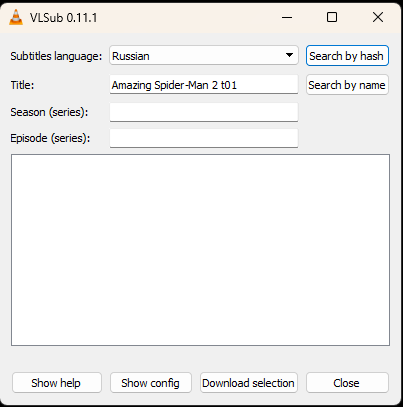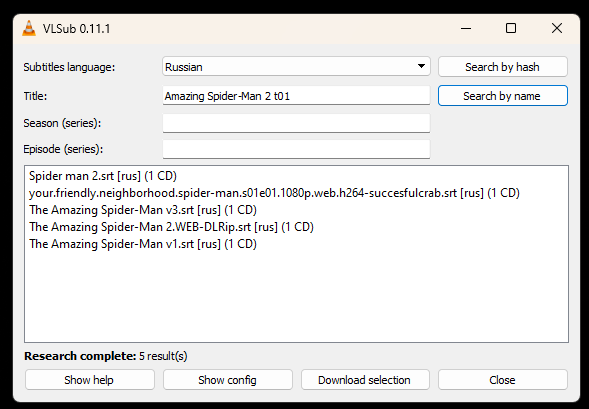In a continuation of my earlier post about how watching movies and cartoons in French helps my child improve their language skills, I ran into a problem that many language learners (and movie lovers) eventually face: subtitle desynchronization.
👉 Read the first post here: How French Movies Help My Child Learn the Language
The Problem
Let’s take a real example — a movie I recently bought sealed for only €2: The Amazing Spider-Man 2: Rise of Electro* (2014), directed by Marc Webb. We really enjoyed the original trilogy with Tobey Maguire, and this reboot felt like a great addition.
However, when I tried to watch it with external subtitles, I noticed something strange. Even though the subtitle file said it matched a runtime of 2h 21min, the subtitles were delayed — the character would start speaking, and only about 1 second later would the subtitle appear.
At first, I tried fixing this using VLC Media Player, which I use to watch movies on my PC. VLC includes a feature to adjust subtitle delay, which helps… but only at the beginning. As the movie goes on, the desynchronization grows worse.
So I started searching for a better solution.
Using VLSub in VLC to Download Subtitles
Luckily, VLC has a great built-in tool called VLSub. It allows you to search and download subtitles from OpenSubtitles.org without leaving VLC.
Here’s how to use it:
- Open VLC and go to:
Menu → View → VLSub - Enter the movie title, choose your language and version (e.g. BluRay / WEB-DL), and click Download selection.
- The subtitle file will be saved next to your movie with the same filename.


⚠️ VLSub uses https://www.opensubtitles.org — not the
.comversion.
Sometimes it takes trying a few different subtitles before you find one that is perfectly in sync. In my case, the third subtitle option worked flawlessly.
Encoding Problems on Android TV Boxes
When I copied the subtitle file to my Tanix W2 TV box (a budget Android box under €25), I faced another issue: The subtitles appeared as question marks (???) on screen.
This was caused by incorrect file encoding — the subtitles were likely saved in Windows-1251, which is common for Cyrillic subtitles but not supported everywhere.
Solution:
I opened the subtitle file in Subtitle Edit and re-saved it using UTF-8 (without BOM)
After that, the subtitles worked perfectly on the TV box as well.
Key Takeaways
- Check the frame rate and runtime of your movie. Blu-ray rips often use 23.976 fps, while some WEB-DL versions are 25 fps — this can cause subtitle drift.
- Use VLSub inside VLC to search and download subtitles from opensubtitles.org.
- Always try a few subtitle files if the first one doesn’t sync properly.
- If you see strange characters or question marks, convert the
.srtfile to UTF-8 without BOM using Subtitle Edit or a good text editor. - Some subtitle files match specific versions of the movie — Blu-ray, WEB-DL, etc. — so it helps to know your source.
With a few simple tools and some patience, you can enjoy any movie in your target language with accurate, readable subtitles — even on a budget setup.
👉 Coming next: How to batch-fix subtitle encoding and package them inside MKV files for clean permanent storage.